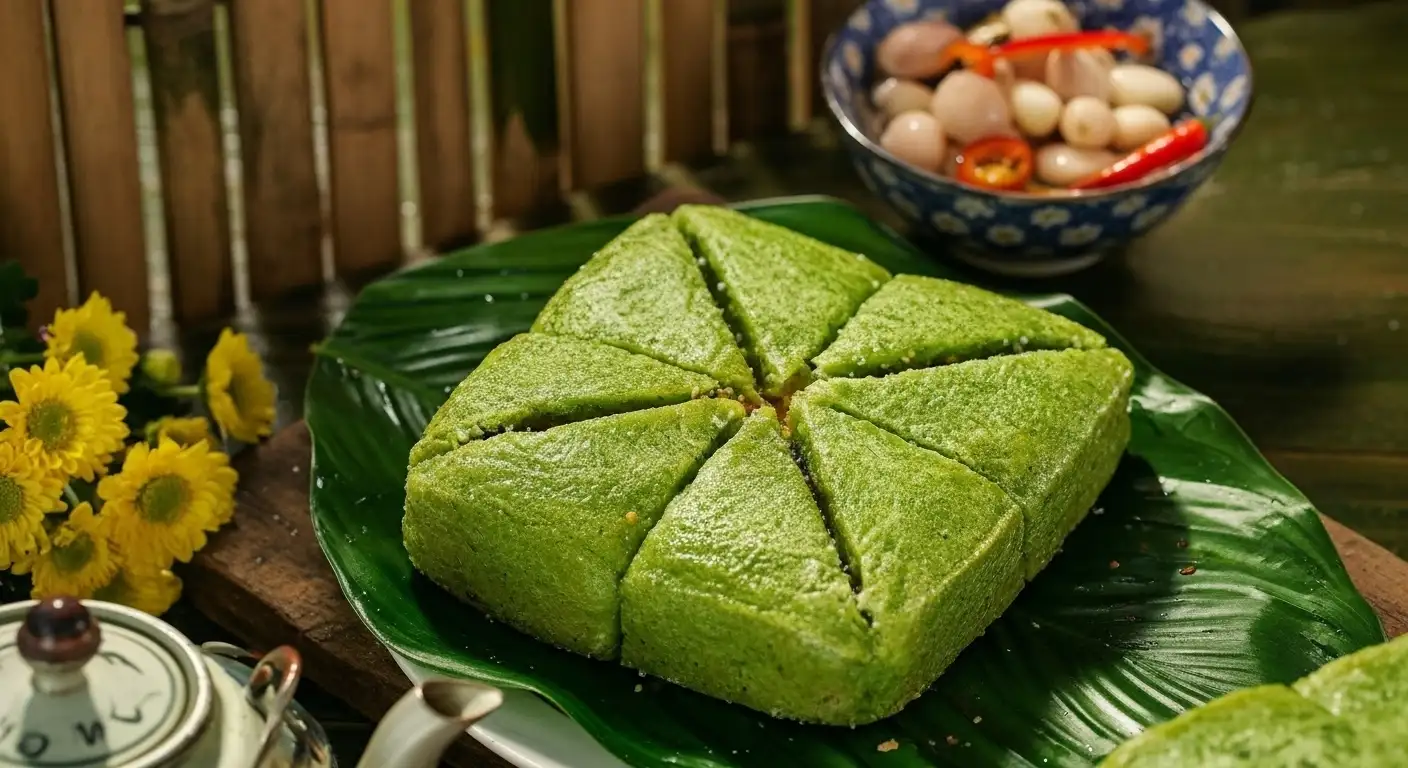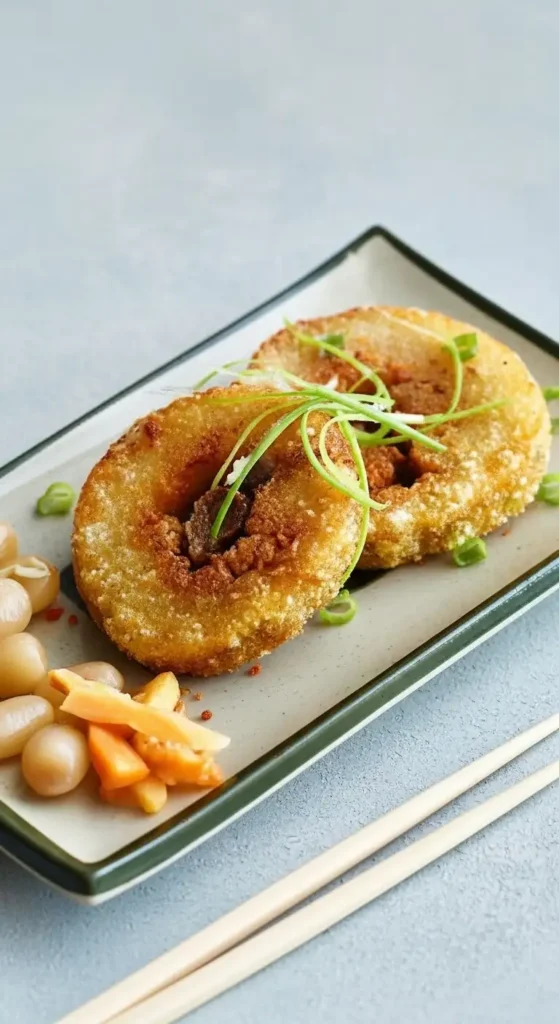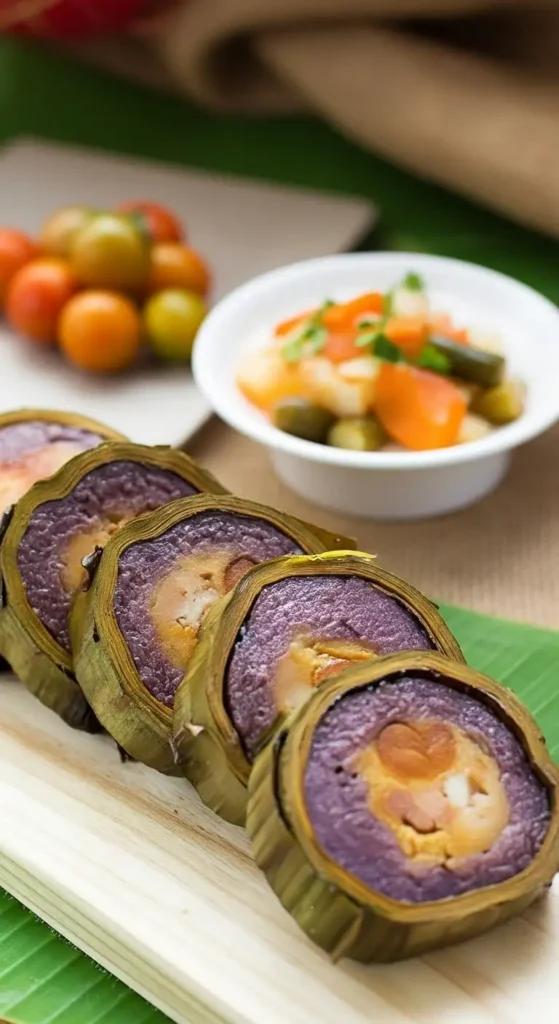Bánh Chưng (pronounced “Bahn Choong”) and Bánh Tét (pronounced “Bahn Tet”) are the most significant and spiritually resonant dishes in Vietnamese cuisine, specifically created and consumed during Tết (Lunar New Year). They are not merely cakes; they are cultural symbols of family reunion, gratitude to ancestors, and prayers for a prosperous harvest.
The key difference lies in their shape, which reflects a deep regional and cosmological meaning.
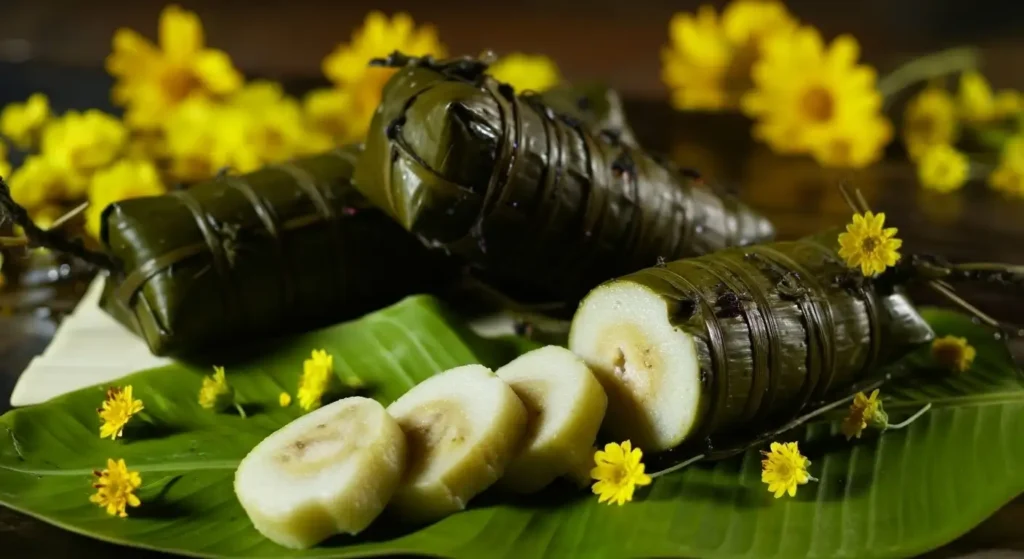
Bánh Chưng & Bánh Tét: The Basics
Shared Ingredients: Both cakes are savory sticky rice dumplings made from the same core ingredients:
Glutinous Rice (Gạo nếp): Soaked overnight and mixed with a little salt, forming the outer layer.
Mung Bean Paste (Đỗ xanh): A creamy, savory layer made from hulled, cooked, and mashed mung beans.
Fatty Pork (Thịt lợn ba chỉ): A slab of pork belly, marinated heavily with salt, black pepper, and sometimes fish sauce, placed at the center.
The Process: The ingredients are meticulously layered, wrapped tightly in leaves (traditionally Lá dong or banana leaves), tied securely with bamboo strings, and then boiled for 8 to 12 hours until the rice is fully cooked, tender, and fragrant.
Cultural Symbolism:
Bánh Chưng (Square): Symbolizes the Earth (Đất), representing abundance, fertility, and the bounty of the land.
Bánh Tét (Cylinder): Symbolizes the Sky or Heavens (Trời), representing continuity, community, and the connection between generations.
Varieties of Bánh Chưng and Bánh Tét
While the classic savory pork and mung bean filling is the standard, both cakes have variations:
| Type of Cake | Variety Name | Key Feature & Filling |
|---|---|---|
| Bánh Tét (South/Central) | Bánh Tét Chuối (Sweet Banana) | Sticky rice wrapped around a whole ripe banana (or mashed banana) and often sweetened with coconut milk and sometimes red bean. The popular sweet version. |
| Bánh Tét (South) | Bánh Tét Lạp Xưởng (Sausage) | Incorporates Chinese sausage (lạp xưởng) and sometimes salted duck eggs, adding a rich, savory-sweet flavor and vibrant color to the filling. |
| Bánh Chưng (North) | Bánh Chưng Chay (Vegetarian) | Simply omits the pork belly, focusing solely on the sticky rice and seasoned mung bean filling. |
| Bánh Chưng (North) | Bánh Chưng Gấc (Gac Fruit) | The sticky rice is mixed with Gấc fruit pulp, giving the cake a striking, naturally red-orange color, symbolizing luck and prosperity. |
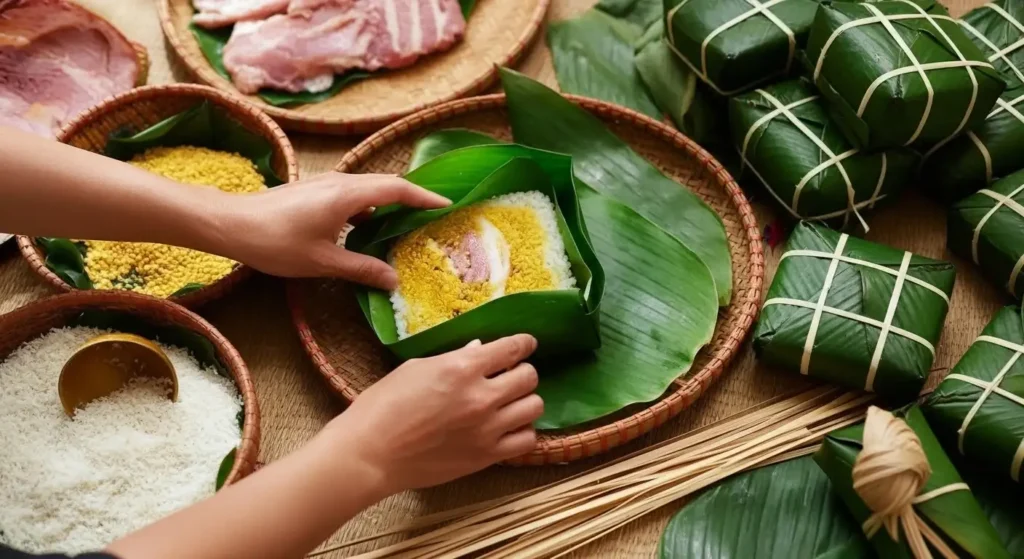
How to Eat Bánh Chưng and Bánh Tét
These cakes are dense and rich, designed to sustain families during the days of Tết when minimal cooking is done.
Serving Temperature: They can be eaten warm or at room temperature. Since they are pre-cooked, they keep well for several days.
Cutting Technique:
Bánh Chưng: Is traditionally cut into eight equal wedges (like a pie) using the bamboo strings it was tied with, ensuring each person gets a balanced share of rice, bean, and pork.
Bánh Tét: Is unwrapped and cut into thick, wheel-shaped slices.
Traditional Accompaniments: The richness of the cakes requires a tangy counterpoint:
Dưa Hành / Củ Kiệu: Pickled vegetables. In the North, pickled shallots (Dưa Hành) are essential. In the South, pickled leeks (Củ Kiệu) are preferred. These act as a refreshing palate cleanser.
Braised Pork (Thịt Kho Tàu): In the South, it is often paired with pork and eggs braised in coconut water.
The “Morning After” Dish (Bánh Chưng Chiên / Bánh Tét Chiên): Perhaps the most beloved way to eat leftovers! Slices of the cake are pan-fried in oil until the exterior is golden brown and shatteringly crispy, while the interior remains soft and chewy. This fried version is a favorite for breakfast or a snack.
Regional Differences
The core ingredients are universal, but the shape and specific culinary pairings clearly distinguish the regions:
| Feature | Northern Vietnam | Central Vietnam | Southern Vietnam |
|---|---|---|---|
| Cake Name | Bánh Chưng (Square Cake) | Bánh Tét (Cylinder Cake) | Bánh Tét (Cylinder Cake) |
| Shape | Square (Symbolizes the Earth) | Cylindrical (Symbolizes the Sky) | Cylindrical (Symbolizes the Sky/Continuity) |
| Wrapping Leaf | Traditionally Lá dong (Phrynium leaves), which imparts a deeper, more vibrant green color. | Mostly Banana Leaves (Lá chuối). | Mostly Banana Leaves (Lá chuối). |
| Fillings | Very traditional: Sticky rice, Mung Bean, and Pork. Flavors are typically less sweet. | Often made smaller and with a reputation for being more delicate/sophisticated due to the former Imperial capital (Huế). | Features the most variations, including sweet fillings (banana, coconut) and additions like salted egg and Chinese sausage. Flavors are generally sweeter. |
| Side Pickles | Dưa Hành (Pickled Shallots) | Dưa Món (Mixed Pickles: sliced kohlrabi, carrot, papaya) | Củ Kiệu (Pickled Leeks), often served with dried shrimp. |
| Typical Pairing | Eaten with pickled shallots and often paired with Giò Lụa (Vietnamese pork sausage). | Served with Dưa Món (Mixed Pickles). | Often enjoyed with Thịt Kho Tàu (Braised Pork in Coconut Water). |
